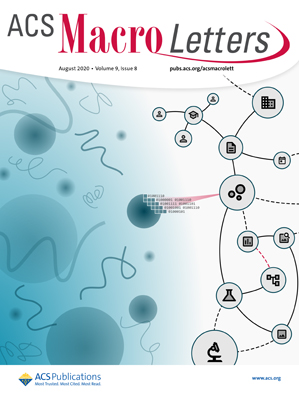Bioinspired Passive Cooling Hydrogel for Visualizing Hygroscopicity and Desorption Process
IF 5.1
Q1 POLYMER SCIENCE
引用次数: 0
Abstract
Self‐hygroscopic hydrogels, characterized by high evaporation enthalpy, cooling efficiency, and self‐regulating properties, have garnered significant attention. However, most current research focuses on enhancing the hygroscopic and desorption performance, often overlooking the importance of monitoring the self‐regulation process, which limits its further application. Advanced visualization technologies, such as in situ electrical impedance tomography, low‐field nuclear magnetic resonance, and hyperspectral imaging, offer potential insights into this behavior, yet they often require additional devices, incur high costs, and involve complex sample preparation processes. Therefore, drawing inspiration from nature, humidity‐color‐sensitive hydrogels (HCSHs) strategy is proposed for visualized cooling. Benefiting from the strong polar responsiveness of the aggregation‐induced emission (AIE) molecules, the hydrogel's fluorescence significantly changes with varying interior water content, thereby its self‐regulation process is monitored easily. Further, the obtained hydrogel could be applied in the electronic device cooling owing to the polymer skeletons’ high swelling ratio, strong adhesion, and excellent self‐hygroscopic properties. This strategy overcomes current limitations in the visual technology of self‐hygroscopic materials and provides new insights into intelligent thermal management for electronic devices.用于可视化吸湿性和解吸过程的生物启发式被动冷却水凝胶
自吸湿水凝胶具有高蒸发焓、冷却效率和自我调节特性,因此备受关注。然而,目前大多数研究都集中在提高吸湿和解吸性能上,往往忽略了监测自我调节过程的重要性,从而限制了其进一步应用。先进的可视化技术,如原位电阻抗层析成像、低场核磁共振和高光谱成像,为深入了解这种行为提供了可能,但它们往往需要额外的设备,成本高昂,而且涉及复杂的样品制备过程。因此,我们从大自然中汲取灵感,提出了湿度-颜色敏感水凝胶(HCSHs)战略,用于可视化冷却。利用聚合诱导发射(AIE)分子的强极性响应性,水凝胶的荧光会随着内部含水量的变化而发生显著变化,从而方便地监测其自我调节过程。此外,由于聚合物骨架具有高溶胀率、强粘附性和优异的自吸湿性,所获得的水凝胶可用于电子设备冷却。这一策略克服了目前自吸湿材料视觉技术的局限性,为电子设备的智能热管理提供了新的思路。
本文章由计算机程序翻译,如有差异,请以英文原文为准。
求助全文
约1分钟内获得全文
求助全文
来源期刊
CiteScore
10.40
自引率
3.40%
发文量
209
审稿时长
1 months
期刊介绍:
ACS Macro Letters publishes research in all areas of contemporary soft matter science in which macromolecules play a key role, including nanotechnology, self-assembly, supramolecular chemistry, biomaterials, energy generation and storage, and renewable/sustainable materials. Submissions to ACS Macro Letters should justify clearly the rapid disclosure of the key elements of the study. The scope of the journal includes high-impact research of broad interest in all areas of polymer science and engineering, including cross-disciplinary research that interfaces with polymer science.
With the launch of ACS Macro Letters, all Communications that were formerly published in Macromolecules and Biomacromolecules will be published as Letters in ACS Macro Letters.

 求助内容:
求助内容: 应助结果提醒方式:
应助结果提醒方式:


